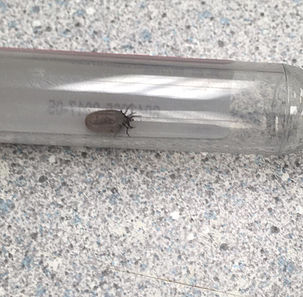You guessed it, it’s that time of year again! Spring is here (almost), and with the weather warming up again, ticks will once again start to become more active and look for hosts to feed off of – ie you, me, our pets, and other animals.
We’ll try post a few other things and tidbits of info throughout the spring regarding ticks, but here’s a quick refresher and things to keep in mind.
1. Ticks become active when the temperature gets over 4C.
2. Ticks can carry several diseases that can be transmitted to both people, dogs, and cats. These include Lyme disease, anaplasma, babesia, ehrlichia, and a few others.
*Edit* Lyme disease is not thought to infect cats, as there have not been any reported cases of natural Lyme disease infections in cats as of yet. This does not apply to other tick-borne diseases, unfortunately.
a. When diagnosed early, these diseases are often very treatable. If left undetected for prolonged periods, they can wreak havoc on the body and cause serious medical issues.
3. If you find a tick, the government will pay for it to be identified and tested for Lyme disease. They do not, unfortunately, test for any of the other infectious diseases, so we still recommend having your dog tested for exposure to these diseases via a simple blood test.
4. Being bitten by an infected tick does not always result in infection. Transmission of the disease can take up to 24 hours depending on the disease. If the tick is killed or removed early enough, this can prevent disease transmission.
5. There is a Lyme disease vaccine – although not 100% effective due to different strains being present, it can reduce the chance of acquiring the disease. This does not prevent other diseases, so tick prevention (avoidance and medication) is still recommended. There are reliable monthly medications that can ensure that even if a tick does happen to latch on and bite your pet, that they are killed off.
6. Properly remove them if seen. Do not squish them if you see them. Do not try to apply any chemicals or burn them. Use a tick remover, or some flat head tweezers and pull straight out after grabbing them as close to the skin as possible. Then we can have the ticks tested.
Speak to your veterinarian about the risk, and the best way to prevent ticks on your animals.

